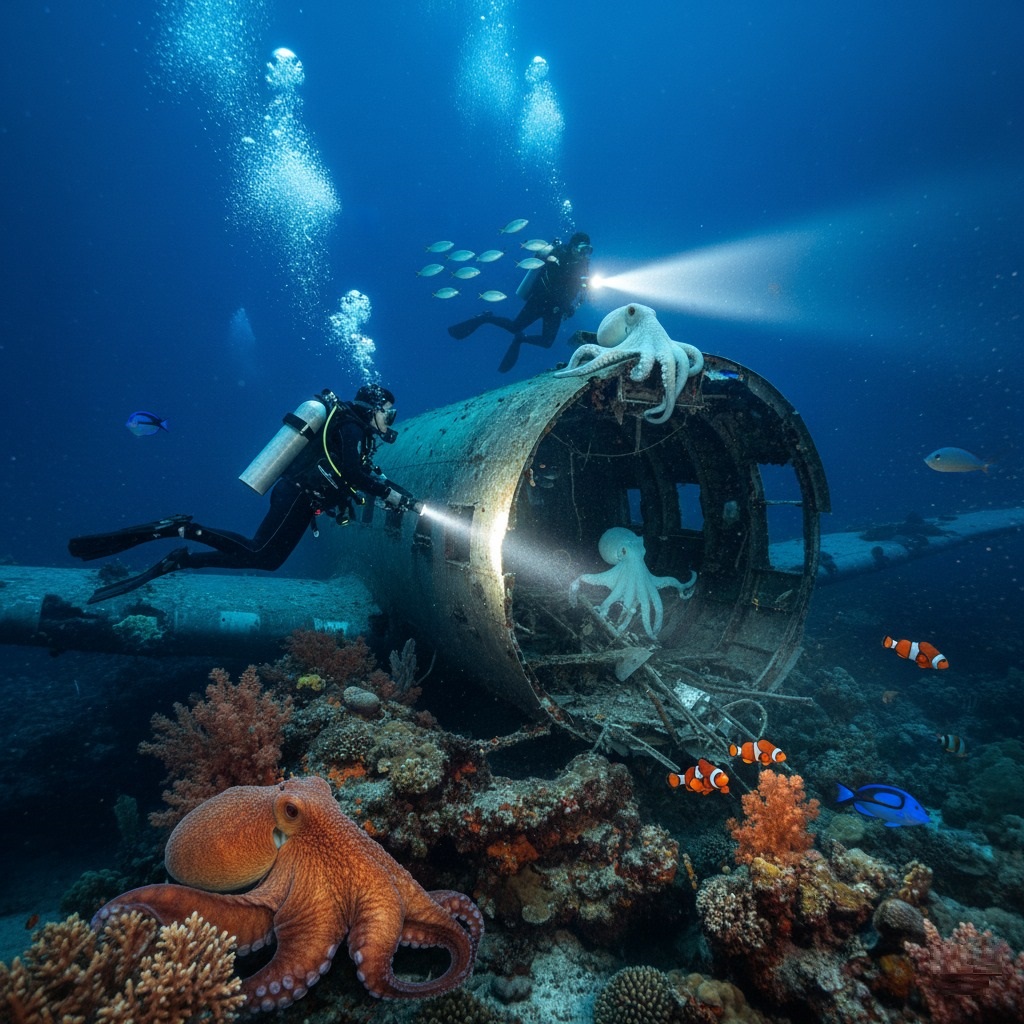The Red Sea’s Ghostly Guardians: Exploring the Thistlegorm Wreck

The year was 2023. Dr. Aris Thorne, a renowned marine archaeologist specializing in 20th-century maritime losses, adjusted his dive mask, the cool Red Sea water a stark contrast to the desert heat of the Sinai Peninsula above. Beside him, his lead research diver, Anya Sharma, gave a confident thumbs-up. Their target: the infamous SS Thistlegorm, a British armed merchant navy ship sunk by German bombers in 1941, now a legendary dive site off the coast of Sharm El Sheikh.
“Visibility’s excellent today, Aris,” Anya’s voice crackled through their comms, her powerful flashlight cutting a swathe through the sapphire depths. “Looks like we’ll have a good look at the aircraft wreckage.”
Their mission wasn’t just recreational. They were documenting the long-term biological integration of the wreck, a metal behemoth that had become a thriving coral metropolis. As they descended, the colossal form of the Thistlegorm slowly materialized, a ghostly silhouette against the cerulean backdrop. Their focus today was on the stern section, specifically the two WWII-era locomotives and, more importantly for Aris, the partial remains of a Bristol Blenheim light bomber stowed in her holds.
“There it is,” Aris murmured, his own beam piercing the gloom, revealing the corroded, yet distinctly recognizable, fuselage of the aircraft. It wasn’t the entire plane, but enough to spark the imagination – a piece of a forgotten battle, now home to a new ecosystem.
As they approached, their lights revealed a captivating scene. An enormous common octopus, its skin mottled in shades of brown and orange, was perched majestically on the coral-covered exterior of the fuselage, its intelligent eyes observing them with an ancient wisdom. Inside the hollowed-out shell, two smaller, paler octopuses tentatively extended their arms from crevices, perhaps sensing the shift in light.
Anya’s beam swept across a cloud of iridescent blue surgeonfish and a vibrant school of fusiliers, darting in and out of the wreck’s skeletal remains. Closer to the seabed, a pair of clownfish peered defiantly from their anemone home, while a solitary regal angelfish glided past.
“Remarkable,” Anya breathed, her voice filled with awe. “The life here… it’s absolutely taken over.”
Aris nodded, his gaze fixed on the octopus. “These aren’t just ruins, Anya. They’re living monuments. Each barnacle, each coral polyp, each creature tells a story of transformation. The Thistlegorm, once a symbol of wartime struggle, is now a testament to nature’s resilience, a silent guardian of the deep. And these octopuses and fish are its newest inhabitants, the custodians of its forgotten cargo, guarding the ghost of a plane that never flew its final mission.”
They spent the next hour meticulously documenting, the rhythmic hiss of their regulators the only sound disturbing the timeless tranquility of the wreck. The aircraft, once loaded for a conflict long past, now held a different kind of treasure: a thriving, diverse community, brought to life by the very act of its sinking, protected by the depths of the Red Sea. As they ascended, leaving the ghostly guardians behind, Aris felt a profound connection to both the human history and the natural wonder interwoven beneath the waves.
